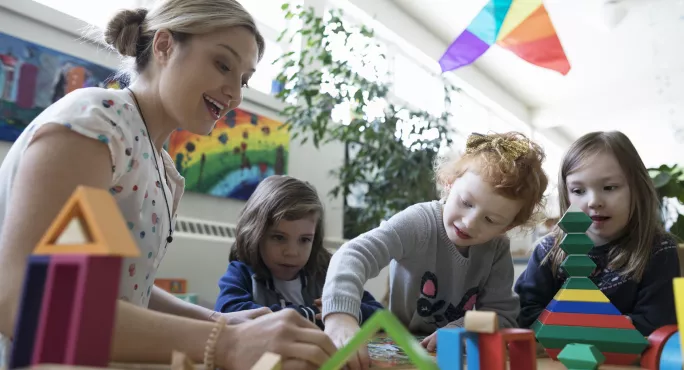- Home
- EYFS: are you letting labels restrict learning?
EYFS: are you letting labels restrict learning?

I’ve recently seen a lot of posts on social media asking for ideas on how to provide “challenge” through “continuous provision”.
Those terms are simple enough, but within them lies a minefield of misunderstanding and misconception.
There are so many labels for our practice now that it’s hardly surprising there is confusion about what they all mean.
Quick read: Why every primary school needs a set of swings
Quick listen: Why we need more support for mental health in primary
Want to know more? Does play-based learning work beyond early years?
Definitions can become contrived and elaborate, sometimes missing the point completely.
As soon as we label our working environment “provision”, we begin to look at it differently and question what we are providing there.
This is a good thing, of course, but it is important to remember that we do not operate in isolation.
There will be perhaps 30 other people (the children) using the work space too. It is our duty as teachers to provide an environment that enables them to practice and embed their skills and knowledge.

The point of continuous provision is that it is exactly that: always the same. It is like coming home. When children arrive every day, they have the security of knowing that there will be no significant changes to get used to.
That is not to say you can’t add to it, but the main components must remain constant unless the children, and all others involved, have been involved in the change.
Encouraging challenge
So how can we encourage children to challenge themselves? Particularly intriguing here is the idea that areas of the provision can be levelled or differentiated.
I once visited a Reception classroom where the team had tried this thinking in their water area.
On the wall beside the water tray were three sets of instruction:
- Group A Count number of teacups of water it takes to fill the bucket.
- Group B Count the number of egg cups of water it takes to fill the bucket.
- Group C Count the number of teaspoons of water it takes to fill the bucket.
(The three referred to different ability groups, with the children already aware of which they were in.)
But the idea of offering challenges that the adults have devised causes problems, and the example above demonstrates this.
Left to their own devices, children will use equipment in ways that we have never thought of, and challenge both the resources and themselves.
By setting three levels of challenge, the team had capped any critical thinking and effective learning.
The bucket in question was a standard household size, so let’s reflect on what the children were being asked to do here. What would they gain from this activity? Why were these challenges set? How would they underpin, embed and lead to further skills and learning?
(It’s important to reflect on and refer to the characteristics of effective teaching and learning here as these are what should inform our provision.)
Lost in levels
By creating these challenges and then levelling them, the team had inadvertently capped the learning that could happen in the water area, as they had limited what would happen with closed activities that had little or no meaning.
They had also labelled the children and risked capping how they thought of themselves and what was permitted in the continuous provision.
In fact, the biggest challenge in this instance was the patience required to fill the bucket with any of the containers provided, and keeping count ! No effective teaching or learning was taking place.
Children develop skills by challenging themselves and being scaffolded to do so. A good example of this is the inclusion of a workshop area in continuous provision.
A well-stocked area including tools and materials the children can use to develop their own ideas is a great way for critical thinking to be developed.
A three-dimensional wall-mounted spaceship was a great example I saw recently. This idea started out with one child, but soon it was team work. The children asked the teacher to help them to think of a way the model could be mounted on paper, and then displayed on the wall. They worked together to solve the problem.
This type of teaching will not happen if we create artificial challenges with adult expectations. The environment must be open-ended and appropriately challenging, physically and intellectually.
Be wary of overthinking the labels used in our everyday professional vocabulary, they are an opportunity not restriction.
Dr Sue Allingham is an EYFS researcher
Keep reading for just £1 per month
You've reached your limit of free articles this month. Subscribe for £1 per month for three months and get:
- Unlimited access to all Tes magazine content
- Exclusive subscriber-only stories
- Award-winning email newsletters


